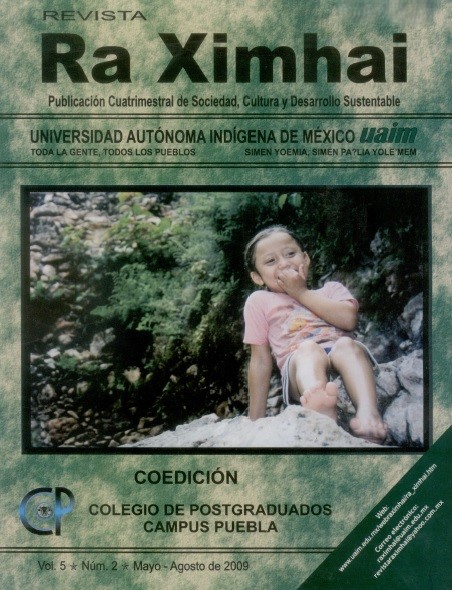Research as a process of social intervention
DOI:
https://doi.org/10.35197/rx.05.02.2009.04.mpKeywords:
Community Engagement, social intervention, interdisciplinarityAbstract
One of the goals of the Intercultural University of Chiapas is the consolidation of its academic programs and for this purpose it is necessary to reflect on the methodological training of its students, and establish various strategies for their connection with sectors where they can develop their research. The degree in Intercultural Communication has within its curricular structure the axis Methodology for Community Engagement, in which the student is motivated to delimit their objects of study, and approach them theoretically and methodologically with interdisciplinary approaches. Throughout four years of existence of this degree, challenges have been faced such as traditionalist methodological positions or theoretical approaches, which are attempted to be reversed with contributions from qualitative paradigms and strengthening the figure of the student as a researcher.
Downloads
References
Ardoino, Jacques. 1980. La intervención:
¿Imaginario del cambio o cambio de lo imaginario?. En: Guattari, Felix, et.al., La intervención institucional, México: Plaza y Valdés Folios, 1987, págs. 13-42.
Bettelheim, Bruno y Rosenfeld, Alvin A. 1993. El arte de lo obvio. Barcelona: Crítica – Drakontos, 1994.
Bachelard, Gaston. 1948. La formación del espíritu científico. Contribución a un psicoanálisis del conocimiento objetivo, 23ª edición, México: Siglo XXI, 2000.
Barthes, Roland. 1995. El acto de escuchar. In: Lo obvio y lo obtuso, Barcelona: Paidós, págs. 243- 256.
Baz, Margarita, 1998. La tarea analítica en la construcción metodológica. In: JÁIDAR, Isabel; et. al., Encrucijadas Metodológicas en Ciencias Sociales. México: UAM-X, Área Subjetividad y Procesos Sociales. Págs. 55-65.
Castoriadis, Cornelius. 1983. La institución y lo imaginario: primera aproximación. In: La institución imaginaria de la sociedad 1, Barcelona: Gusquets Editores, págs. 197-289.
Fernández, Rivas, Lidia. 1999. Subjetividad y psicoanálisis: La presencia del otro en la constitución subjetiva. In: JÁIDAR, Isabel (comp.), Caleidoscopio de subjetividades. México: UAM-X, Cuadernos del TIPI No. 8, págs. 51-63.
–––––1998. Construyendo el problema de investigación. In: JÁIDAR, Isabel; et. al., Encrucijadas Metodológicas en Ciencias Sociales. México: UAM-X, Área Subjetividad y Procesos Sociales, págs. 67-77.
Foucault, Michel. 1975. Vigilar y castigar. Nacimiento de la prisión, 32ª edición, México: Siglo XXI, 2003.
Habermas, Jürgen. 1981. Teoría de la acción comunicativa, I. Racionalidad de la acción y racionalización social. México: Taurus, 2002.
Lozano Rendón, José Carlos.1998. La comunicación como campo y objeto de estudio. In: Teoría e investigación de la Comunicación de Masas, México: Alambra Mexicana. Págs. 20-35.
Mannoni, Maud.1973. La educación imposible. 10ª edición, México: Siglo XXI, 2000.
Mier, Raymundo. 2002. El acto antropológico: la intervención como extrañeza. In: Tramas. Subjetividad y procesos sociales, México:
UAM-X, Número 18-19, junio / diciembre 2002, págs. 13-50.
Morin, Edgar. 1998. Introducción al pensamiento complejo. México: Gedisa.
Osorio, Jaime. 2001. La totalidad social como unidad compleja. In: Fundamentos del Análisis Social, México: FCE – UNAM, págs. 17-37.
Vargas, Lilia Esther. 1998. ¿La subjetividad del sujeto o el sujeto de la subjetividad?. In: JÁIDAR, Isabel; et. al. Tras las huellas de la subjetividad, México: UAM-X, Cuadernos del TIPI No. 6, págs. 51-66.
Downloads
Published
How to Cite
Issue
Section
License
Copyright (c) 2009 María del Carmen Peña Cuanda, Luis Fernando Bolaños Gordillo

This work is licensed under a Creative Commons Attribution-NonCommercial 4.0 International License.
Usted es libre de:
- Compartir — copiar y redistribuir el material en cualquier medio o formato
- Adaptar — remezclar, transformar y construir a partir del material
- La licenciante no puede revocar estas libertades en tanto usted siga los términos de la licencia
Bajo los siguientes términos:
- Atribución — Usted debe dar crédito de manera adecuada , brindar un enlace a la licencia, e indicar si se han realizado cambios . Puede hacerlo en cualquier forma razonable, pero no de forma tal que sugiera que usted o su uso tienen el apoyo de la licenciante.
- NoComercial — Usted no puede hacer uso del material con propósitos comerciales .
- No hay restricciones adicionales — No puede aplicar términos legales ni medidas tecnológicas que restrinjan legalmente a otras a hacer cualquier uso permitido por la licencia.








